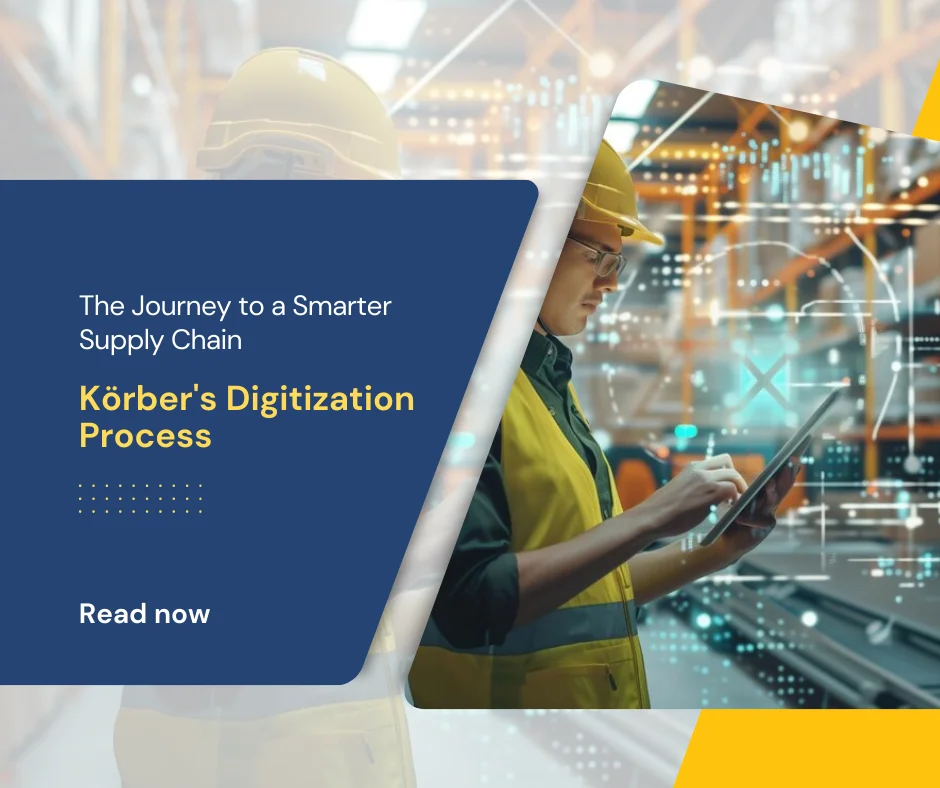In today’s fast-paced world, businesses are grappling with unprecedented challenges. Rising customer expectations, increasingly complex inventories and channels, and a shrinking talent pool are putting immense pressure on supply chains. To navigate these complexities, companies need to become more productive, flexible, and resilient. In essence, you need to become smarter.
What is the Challenge?
Supply chains are under increasing pressure to be smarter, more productive, and more efficient. While technology can be a powerful ally, selecting the right provider or integrating multiple pieces of software that do not communicate effectively can actually make improvements harder to achieve.
Enter Körber’s Digitization Solutions
Functional siloes often reduce visibility in supply chains, leaving them prone to disruptions such as increased customer demand, missing products, and unplanned events like pandemics. Körber introduces a fully digitized supply chain ecosystem to tackle these issues. This integrated ecosystem boasts connected functions, automated processes, and end-to-end visibility, ensuring a seamless operation.
Digitization not only enhances visibility but also generates new insights, making supply chains more efficient, responsive, and adaptable.
The Path to Digitization
Starting with a clear roadmap is crucial for any digitization journey. This roadmap outlines where the business currently stands and where it aims to go. However, as supply chains transition towards digitization, the journey can become fragmented, which may reduce efficiency. To fully reap the benefits of digitization, systems and processes must be seamlessly integrated across the entire warehouse and supply chain network.
Building a Connected Ecosystem
A truly digitized ecosystem relies on a suite of connected digital technologies, including warehouse management systems, transport management systems, and Yard management system. They automate planning, workflows, monitoring and control of operational processes, and introduce system-driven decisions.
Today’s supply chain software aims for:
Supply chain convergence: Achieving end-to-end integration of supply chain applications and processes, ensuring seamless operations from start to finish.
Unified technology platform: Establishing a common base that provides capabilities for connected applications and add-ons, simplifying integration processes.
Microservices architecture: Enabling increased flexibility, continuous improvements, and availability through a modular approach to software development.
Warehouse technologies such as Autonomous Mobile Robots (AMRs) and Voice Directed Work (VDW) streamline operations.
- VDW delivers verbal instructions via headset, enhancing picking speed and accuracy while ensuring worker safety.
- AMRs, equipped with sensors and mapping software, optimize tasks and adapt to changing environments, boosting productivity and efficiency.
Integration with WMS ensures seamless data exchange and process synchronization.
Preparing for the Future
As the consumer-driven market continues to grow in complexity, supply chains must become smarter. Through digitization with IT-based supply chain technologies, solutions, and automated processes, businesses can efficiently adapt to manage demand amidst large-scale supply chain challenges.
Are you ready to have a warehouse of the future? With the Tychons Korber team by your side, you can confidently navigate this transformation and achieve a smarter, more resilient supply chain.

